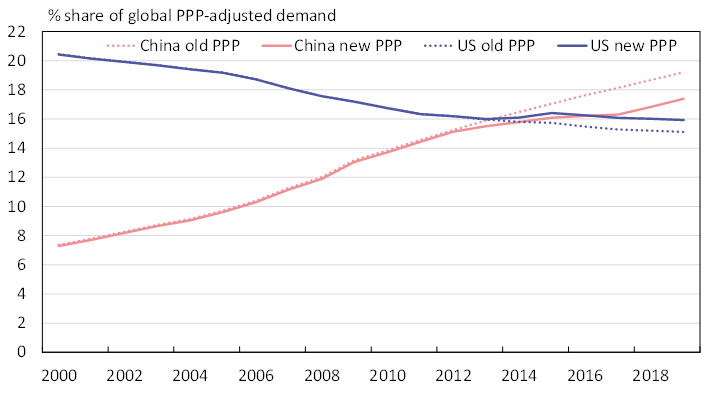BOFIT Weekly Review 44/2020
Revised PPP weights suggest Chinese economy is smaller than previously thought
The International Comparison Program, in which many major international organisations and statistical offices around the world participate, readjusted the weights for purchasing power parity (PPP) during the summer to improve comparison among 176 countries. The weights take into account differences in price levels and exchange rates of the assessed countries. The new weights are based on 2017 figures (the previous weights were taken from 2011 data). Applying the revised weights, the IMF finds that China’s PPP-adjusted GDP represented 17.4 % of the global economy in 2019, down from 19.2 % using previous PPP weights. Nevertheless, China has been the world’s largest economy in PPP-adjusted terms since 2018, when it overtook the US. The new weights have caused shrinkage in the relative size of several emerging economies, including India. Russia’s share of global GDP last year remained unchanged at 3.1 %. The new weights have also caused the size of many developed economies to increase slightly. Measured purely in dollar terms, the US economy is still larger than the Chinese economy.
Even with the new weights, China remains the world’s largest economy in PPP-adjusted terms

Sources: IMF and BOFIT.